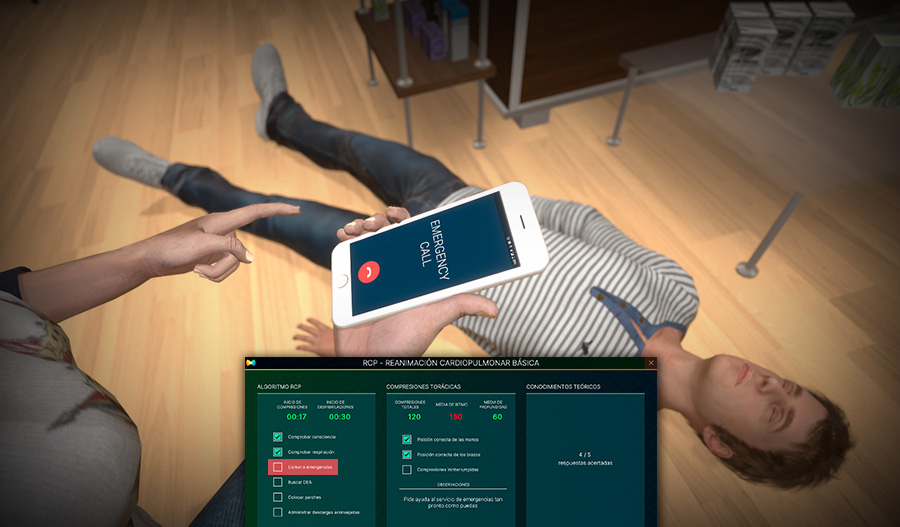Choking is one of the most common causes of unnatural death, according to data from the Risk and Accidents Prevention Observatory. Knowing how to act in such situations can make a difference and save lives.
What to do in case of choking
- Ask the victim to try to cough.
- If the person can't cough, speak, or breathe, the choking is severe.
- Give back blows between the shoulder blades to help clear the obstruction.
- If the person continues to be unable to breathe, perform the Heimlich maneuver.
It is crucial to understand the different types of choking. The response to mild choking is not the same as for severe choking, so learning to distinguish between them is necessary.
When a person experiences choking but can still cough or speak, it is considered a mild episode. On the other hand, if the person cannot cough and shows signs of suffocation, it is categorized as severe choking.
Choking poses a significant danger that is not always perceived as such. In Spain, choking is the third leading cause of external death, resulting in nearly 3,000 deaths each year. In the United States, the annual death toll from choking approaches 5,000.
Knowing the appropriate response protocol for choking incidents can help prevent many of these deaths. Here, we will explain what you should do in such an emergency.
How to respond to choking
1. Identify whether the choking is mild or severe
Ask the victim to attempt to cough. Coughing is a natural mechanism that can help dislodge the obstruction from the airways. Generally, if the choking is mild, repeated coughing often helps clear the obstruction.
2. Ask the victim to cough
If the person can cough or speak, encourage them to continue coughing, as the choking is mild. However, if they cannot cough, speak, or breathe, it is a severe choking situation, and you need to take action.
3. Give back blows between the shoulder blades
In cases of severe choking, the first step is to give back blows to the victim. These are firm blows administered between the shoulder blades, which may help dislodge the obstruction and allow the victim to cough.
4. Perform the Heimlich maneuver
If the back blows don't work, and the person is still unable to breathe, it is time to perform the Heimlich maneuver.
The Heimlich maneuver involves applying a series of abdominal compressions to choking victims. The compressions are administered just below the ribcage and above the navel, helping the victim to expel the obstructing object.
Training in Heimlich maneuver to help choking victims
Invented by Henry Heimlich in 1974, the Heimlich maneuver is an emergency procedure that prevents deaths from severe choking. It is a technique that anyone can perform without the need for instruments or equipment.
The technique has variations that adapt to different situations. For example, if you choke and there is no one around to help you, there is a way to perform the Heimlich maneuver on yourself.
There are also differences in how the Heimlich maneuver is performed on adults compared to babies and children. There is even a specific protocol for performing the Heimlich maneuver on dogs. This speaks to the versatility and universality of the technique.
If you want to learn how to perform the Heimlich maneuver to save a choking person, it’s important to receive an adecuate training.
Did you know that technologies such as Virtual Reality (VR) are used nowadays to give immersive and realistic trainings in First aid? You can learn about the First aid simulation, which allows trainers to give Heimlich maneuver trainings, in the following link.








